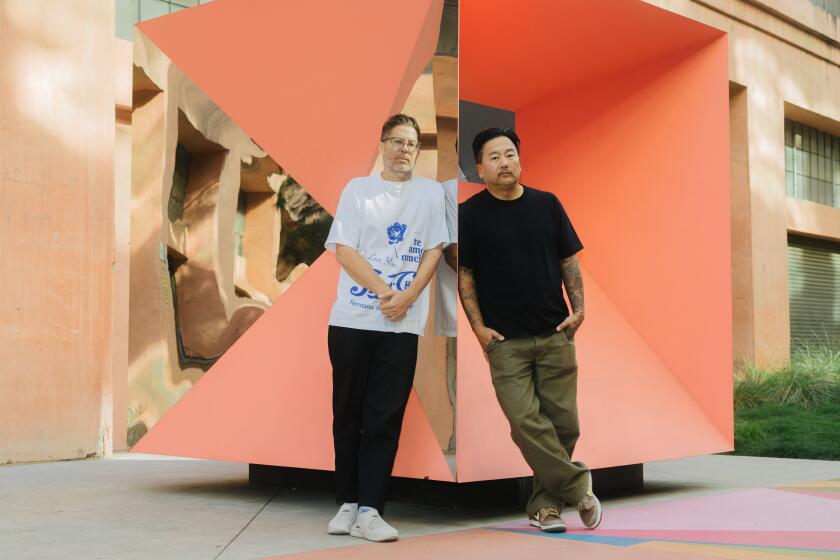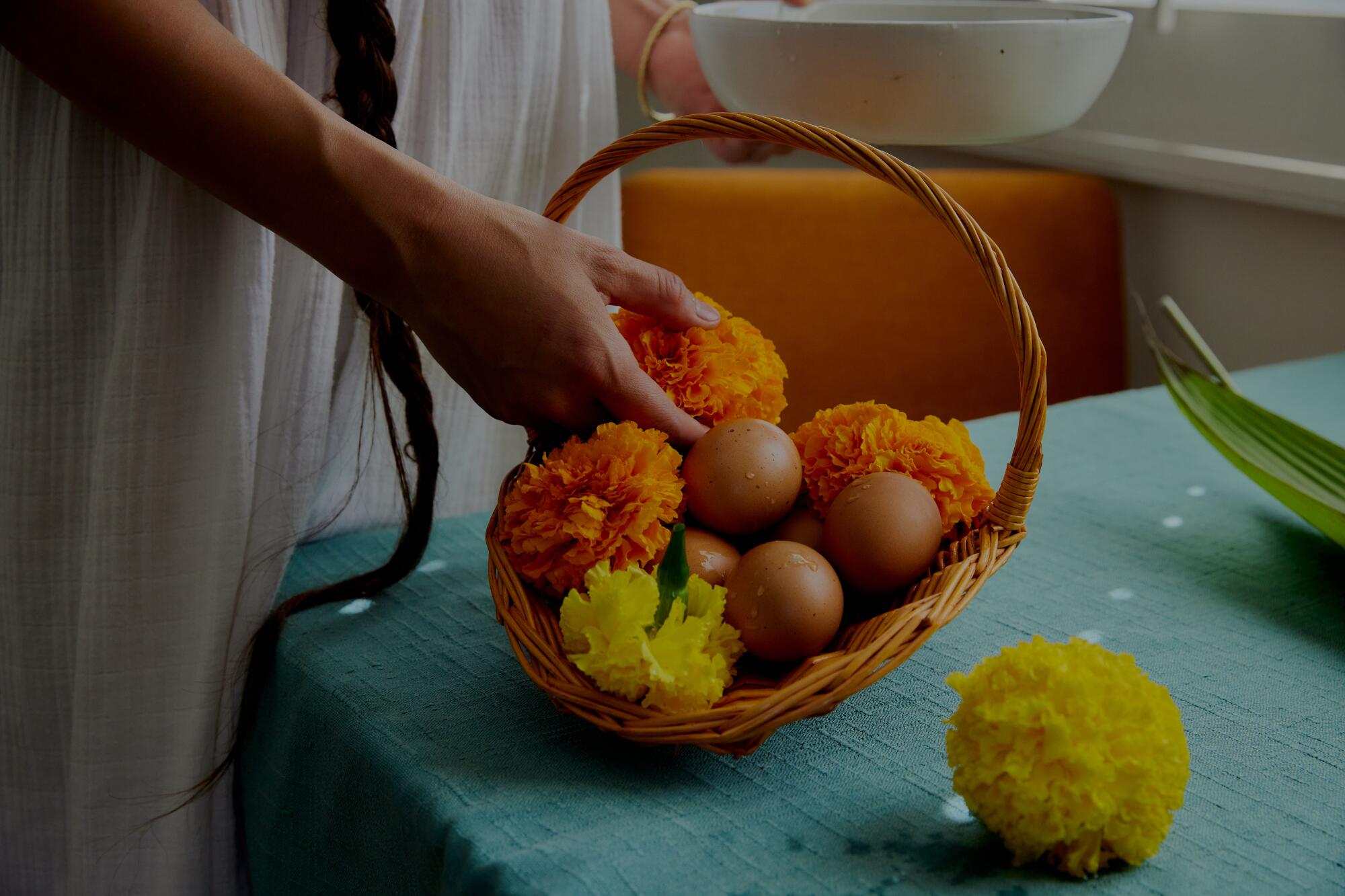
- Share via
This story is part of Image Issue 15, “Diaspora,” a fantastic voyage through the mecca of food, from Hollywood haunts to mall food courts to L.A. staples. Read the whole issue here.
Growing up, I insisted on my specific seat at my family dining table, which was rectangular and built from a deep red Brazilian wood. My parents and sister laughed at me for my insistence. The thing is, we moved every few years, and while we carried our furniture with us to other cities and countries, our dining room table took on a new configuration in each new space. It didn’t make sense — the seat I was claiming wasn’t ever really the same one. But I knew with certainty which was my seat; I was angry, even confused, that my family didn’t understand. Maybe it was one of the things I decided I could make my own, make stable. That in the moment of eating dinner — a nightly, unbroken ritual — I could feel oriented, in my place.
One might say I have an attachment to tables. I’m drawn, even, to poems about tables, and have translated poems about tables, such as one by the Brazilian poet Ana Martins Marques that proclaims: “more important than having one day loved is to have / a solid table.” I have loved many tables: Tables I could spread myself out on. Tables that have held photos of friends, tables full of beautiful postcards, tables on which jars stuffed with pens rest, tables that shelve books I’ve wanted to keep close piled high. Now I have my own dining table, and I don’t mind which seat I take, oftentimes rotating where I choose to eat, maybe because I’m no longer fighting the reality that things will change, at least not in the same way. I’m going to be in L.A. for a while.
Raise a glass to Old Hollywood restaurants. The martinis, tuxedoed waiter and cigarette stains on a mural are a window to history.
My tables are constantly collecting objects and stories, but they can’t be cluttered. I want enough of an expanse, a clear space preserved beneath, like a sky or ocean or blank page, to open myself up: to think, feel and release. Like Martins Marques’ ideal table that “is like a day bed / with its heart of trees, of forests.” A space that you can imagine unraveling yourself over and laying down on, until it becomes “a type of floor that supports” you.
A table that you can hold and touch and that in turn holds and touches you. A table that brings you into the present moment to receive what is before you with attention: a meal, a book, a piece of paper, a person sitting across from you. A table that helps you feel rooted, grounded, connected to the physical world — part of it, uplifted by it, in love with it.
The table carries a specific significance for food stylists. As people who have mastered how to present and plate food — often for commercial photoshoots, editorials and events — these artists use the table in myriad ways. In their hands, each detail on the table is a meditated choice: how much wine fills the glass, the juicy face of a sliced blood orange laid on its side, a couple of grapes tumbling off a brimming platter. Through their creations, food stylists can summon memories. Sustenance becomes a conveyance.
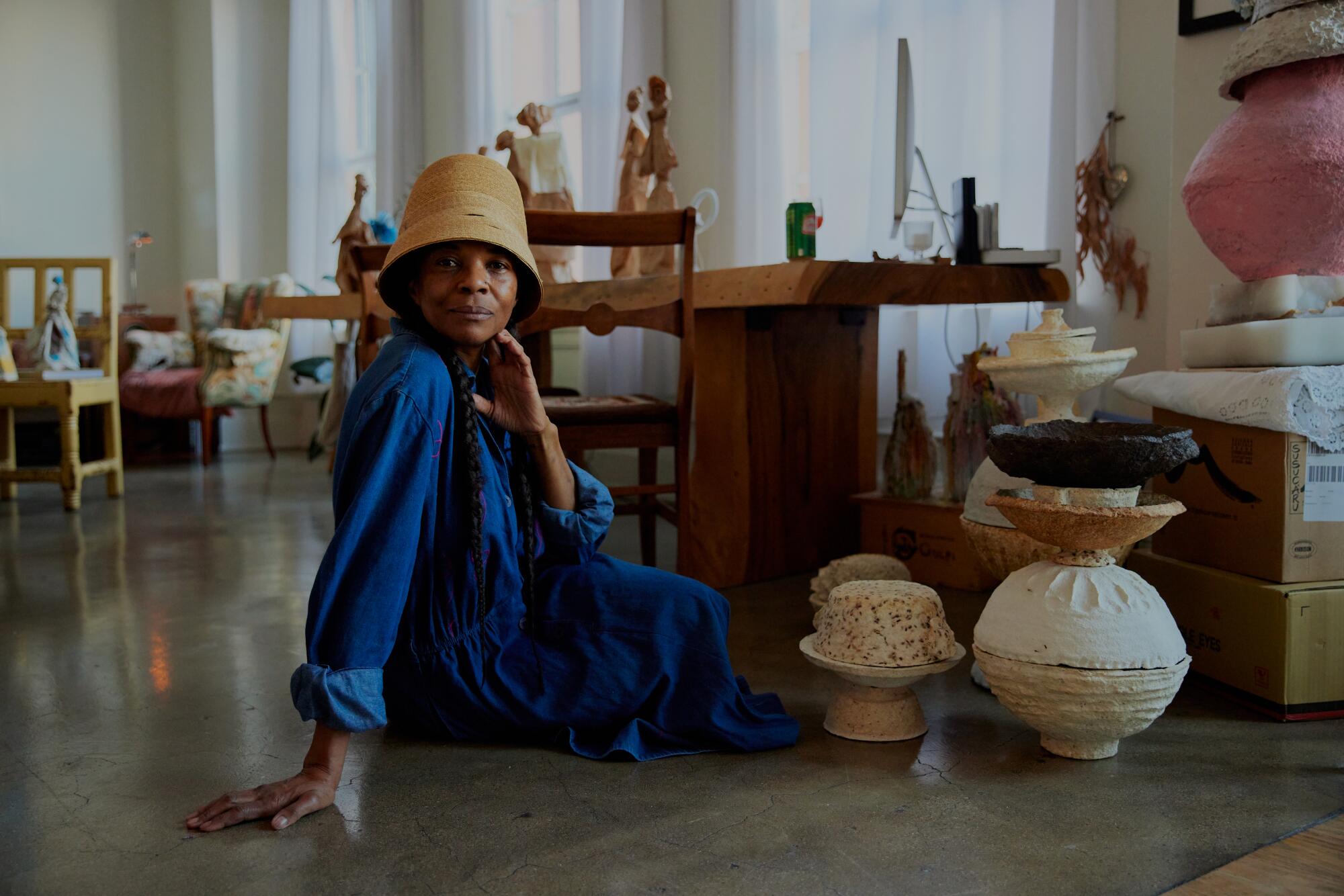
“It’s where stories, secrets are told, where loves are revealed, where we eat,” chef and artist Natalia Pereira tells me in Portuguese, as she stands behind her kitchen counter. She didn’t always have a table to eat at while growing up in Minas Gerais, Brazil. “I experienced the taste of hunger many times, me and my brothers,” she says. “It’s an unforgettable taste.” Pereira is an orphan; she remembers her early childhood with her adoptive mother, Francisca, with intense fondness: sucking sugar canes, climbing avocado and mango trees, heating water by the wood stove for her baths, smelling the scent of cake in her mother’s hair. But all that was taken away from her when she was seven. She describes being “kidnapped” by her “official parents,” whom she lived with for two years before shuttling between foster homes. “That’s why I like to welcome people when they arrive at my restaurant. I like it when they eat, when they drink — eat up, girl, drink your juice!” Pereira laughs.
Sixteen years ago, she opened the restaurant Woodspoon in Downtown L.A., a space that has become her way of representing Brazil, of offering up a memory of her childhood through typically Mineiro dishes, like tropeiro beans and pork loin, or chicken and okra. Inside, the tables are square and wooden and graced with flower bouquets that Pereira sculpted from recycled napkins. There are also menus with pictures of vegetables, spoons and people in festive dresses that she drew by hand.
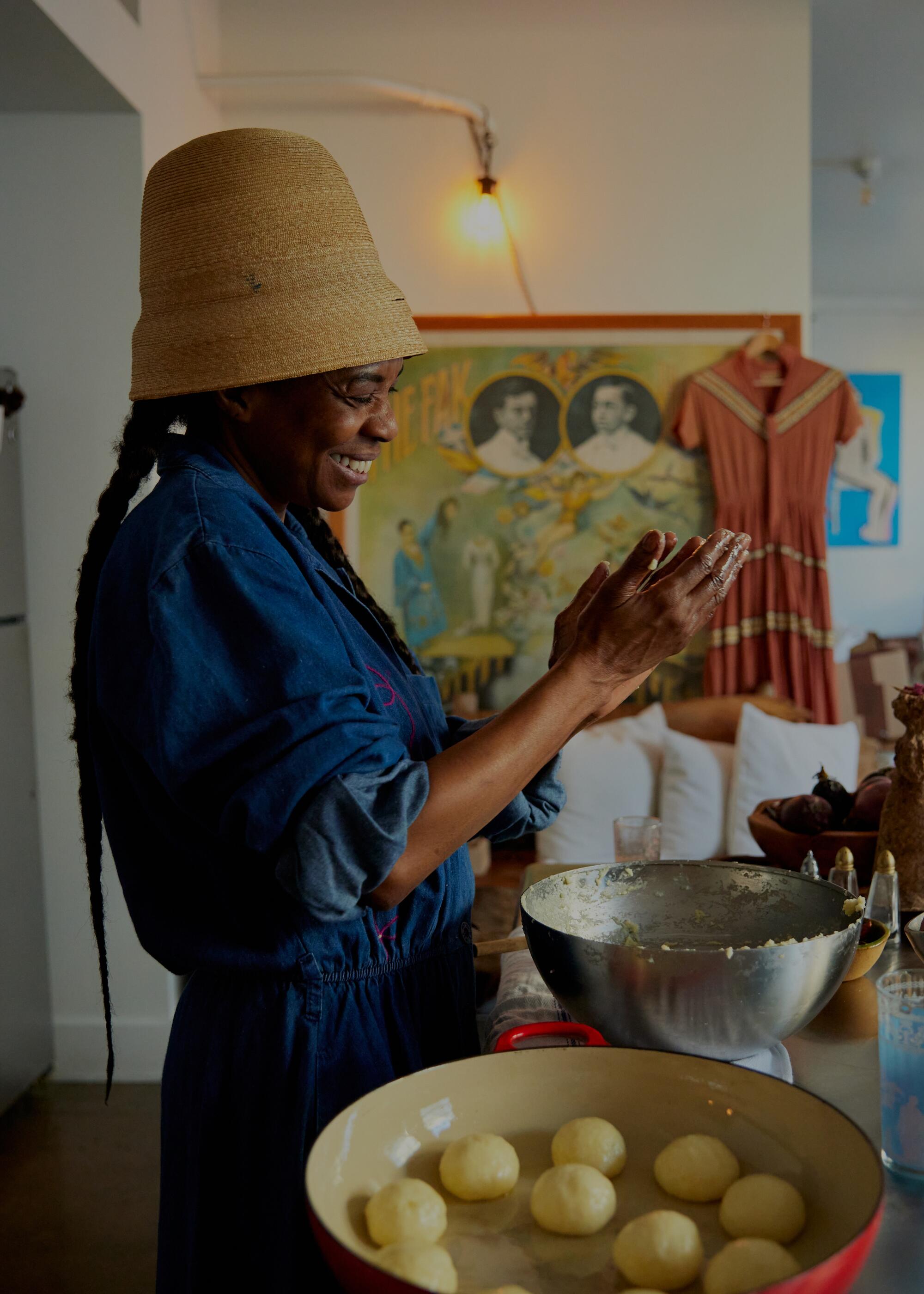
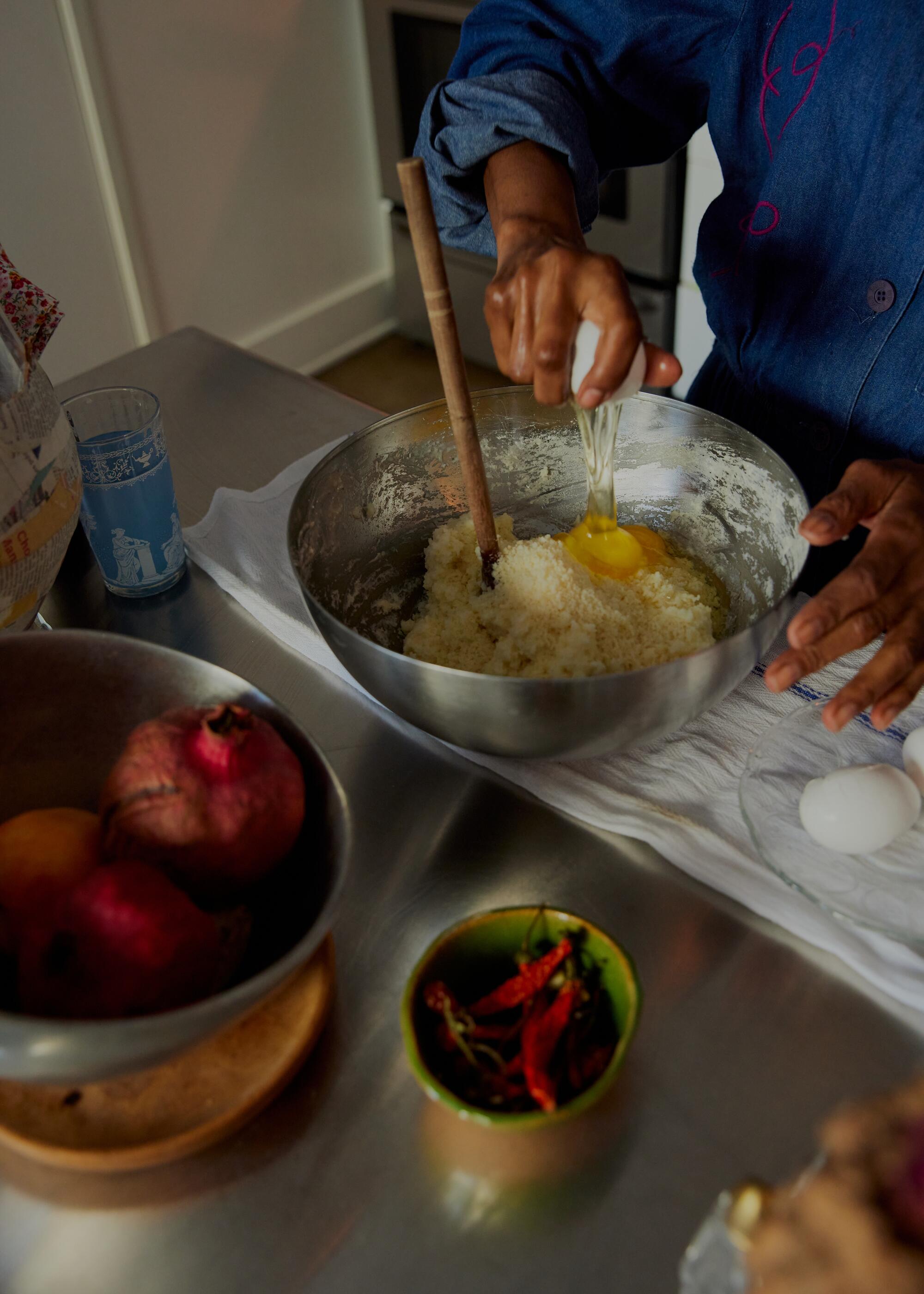
A mesa é um altar, the table is an altar. It allows you to give yourself over to the moment. The first time I meet her at her restaurant Pereira greets me with a mixed plate of typical Brazilian fried snacks — coxinha, kibe, pastel, bolinho — stuffed with beef, cod, cream, and chicken, which I eat and wash down with a tall glass of passion fruit juice. I’m thinking about the freshly squeezed juices at my uncle’s house in the northeast of Brazil, the bolinhos I ate on the sidewalk, the paper bags and my fingers stained with grease. Food stylists can transport you with their work. The table is the point of departure.
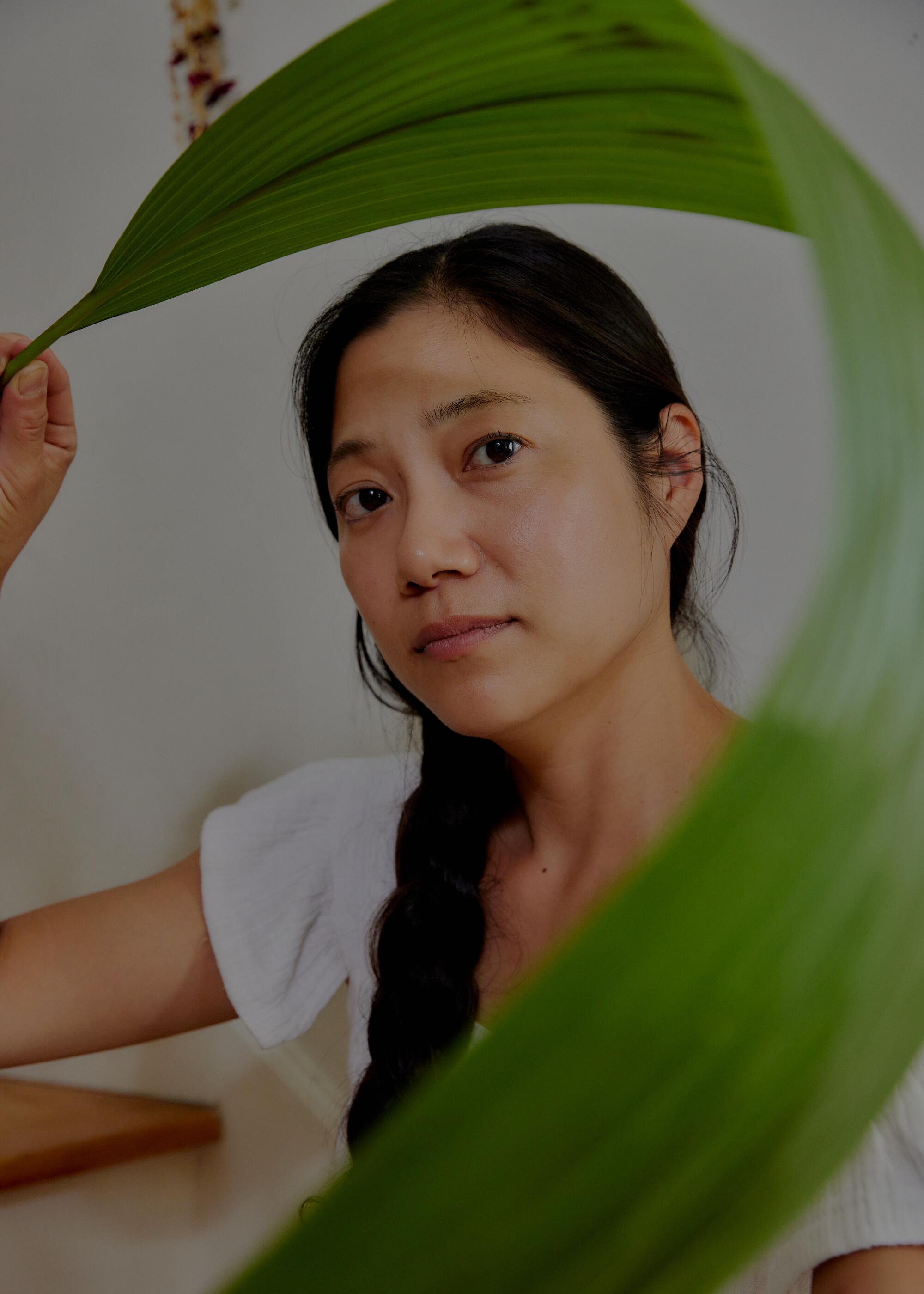
It’s also a space where the work comes together. For chef and food stylist Saehee Cho, who founded the food subscription service Soon Mini, her outdoor wooden table is “a central point”: it’s where she writes her poetry, fiction and essays, where she has her morning coffee, where friends congregate, where 3am tarot card readings take place. Cho regularly co-hosts an event at Windrose Farm in the orchards of Paso Robles, where guests help out with the farm — gardening, feeding the animals — and enjoy an outdoor meal prepared by Cho. Whenever she does events, “it really is just translating the feeling that I do every other night with my friends here,” she says. Her friends know to skip the front door and go directly to her backyard — where she grows her herbs and keeps traces of recent food styling jobs: leftover dried peppers and flowers hang in a large net stretched across the side of her home. “You’re coming to a table, you don’t really know what you’re going to get to eat, but you know that it’s going to be served with care and love.”
In Cho’s family, food was “the big communicator,” more so than words. She grew up in Laguna Hills, Orange County, and spent her summers in Seoul, Korea, with her grandmother, who was a food stylist in the 1960s. Cho speaks Korean, but it was food that closed the “gaps” between languages, cultures and age differences.
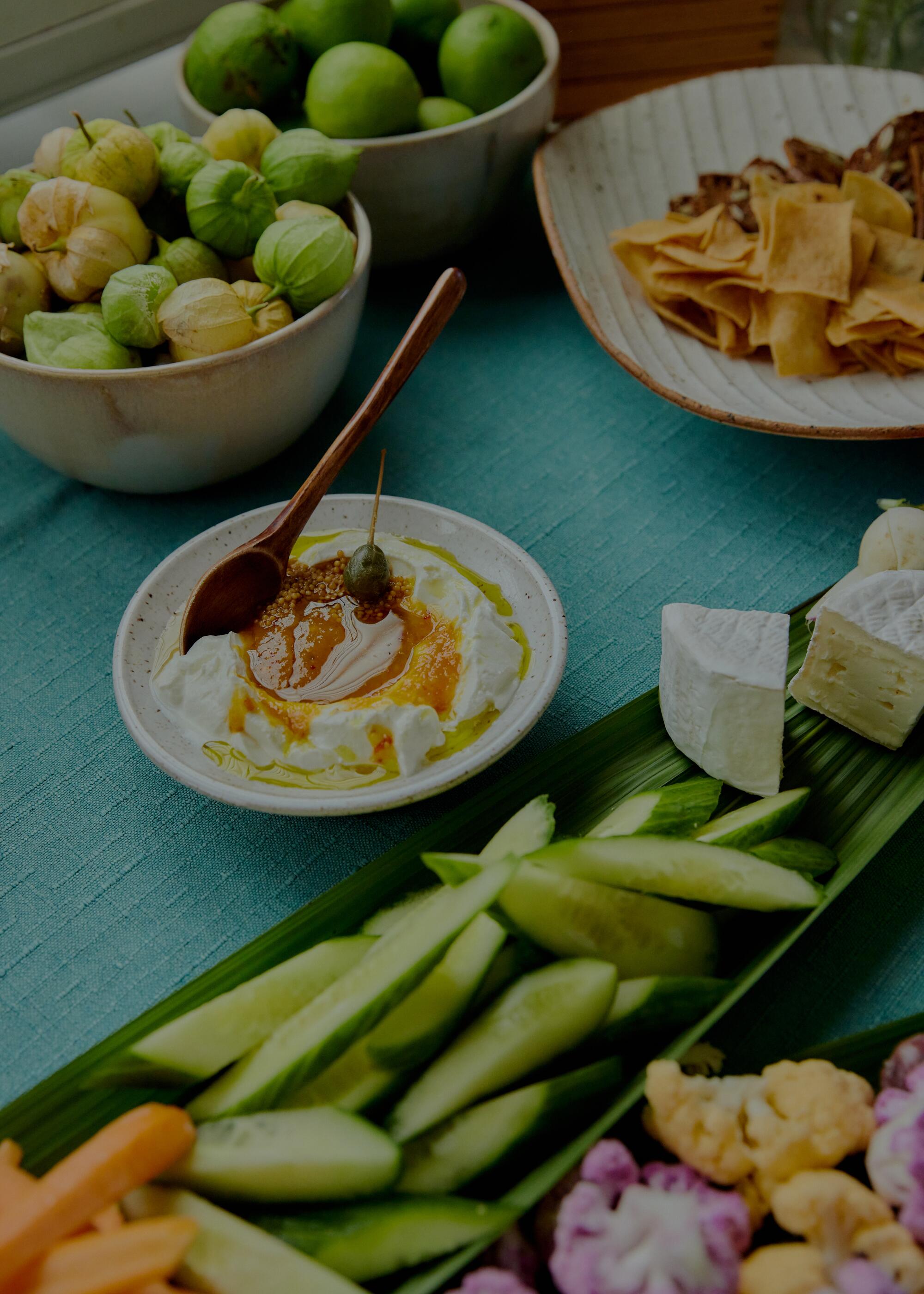
On the day she is hosting me, Cho lays carrots, cucumbers, and baby yellow tomatoes on long green leaves in the shape of canoes. It’s what she likes serving for large groups of friends — many hands reaching over each other, dipping into the same plate. Maybe eating becomes more mindful when it’s communal; not only the dish, but the table has to be considered and shared.
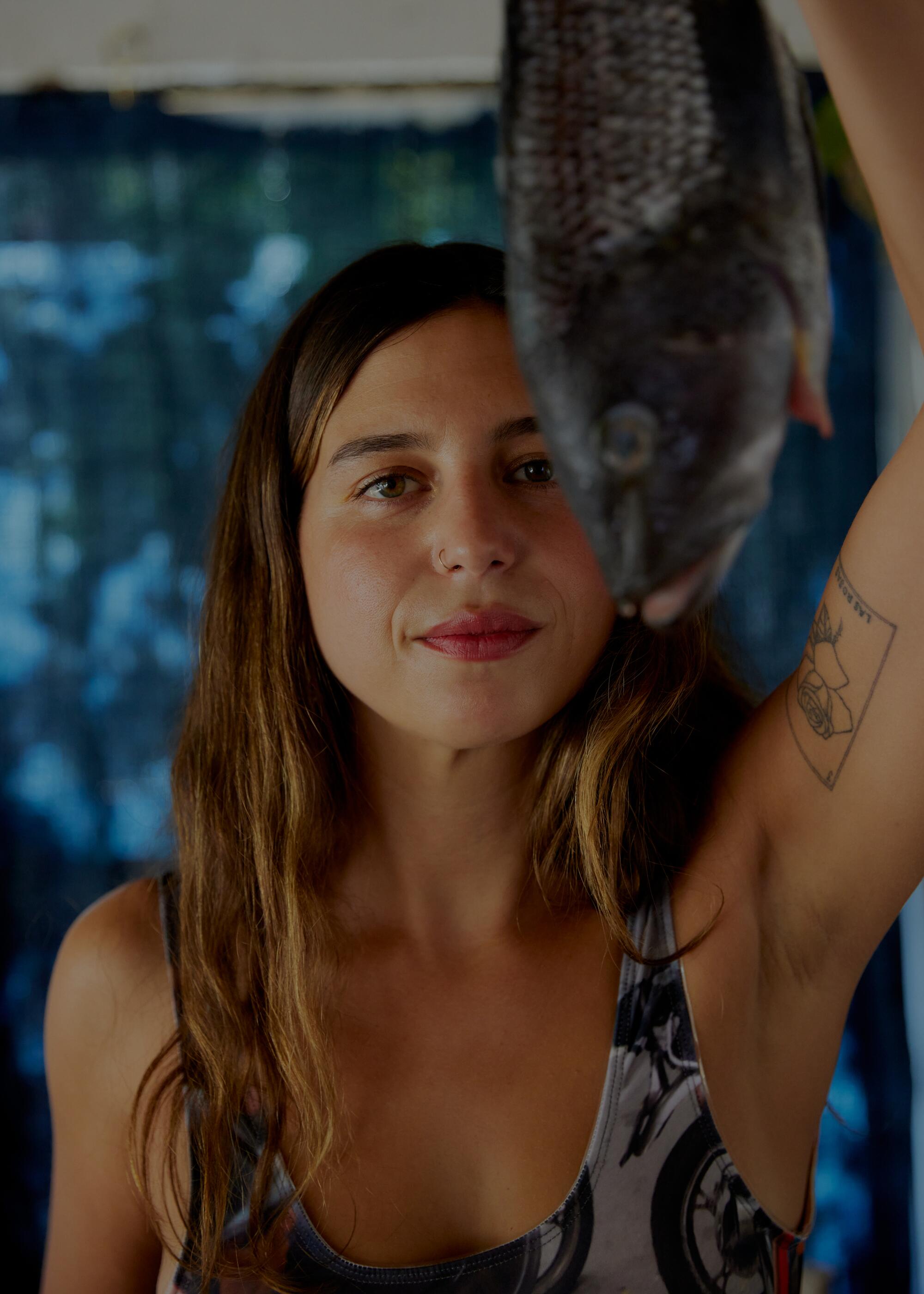
A table can fill the space you might not have known how to cross or test. It says this space that is mine is also yours. This is a guiding principle behind Karla Subero Pittol’s project Chainsaw, for which she hosts pop-up feasts out of her Echo Park garage. All the tables are communal; the main one, a long piece of plywood mounted on two sawhorses, is a replica of Georgia O’Keeffe’s table at Ghost Ranch (the idea of Sara Marlowe Hall, Chainsaw’s creative director). The table anchors the space, which feels a bit like being in Subero Pittol’s living room. (Sometimes she forgets that it’s a garage — until she finds the spider webs.) The decorations are personal: raw woods and ceramics and tropical colors to remind her of her birthplace, Caracas, Venezuela. Paintings hang on the wall, including one by Subero Pittol of a woman looking over her shoulder, her skin mostly exposed (most of her paintings are based on “Playboy” magazines — “so voluptuous, sexy,” she says of the women). Utensils cluster in recycled coconut milk and lychee cans that light up the space. It all has the vibe of a casual hang.
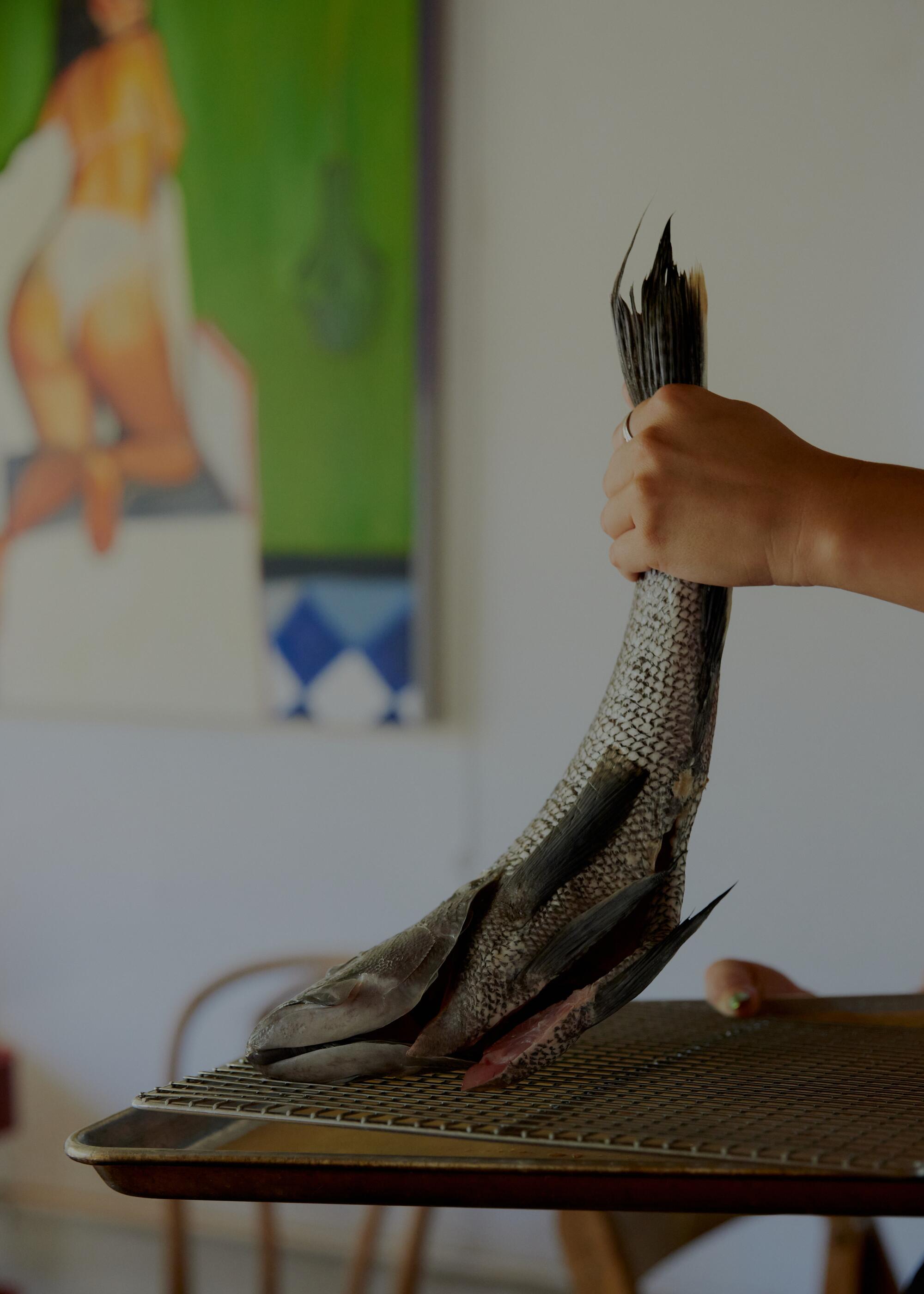
For Sandy Ho, the chef behind the pre-pandemic monthly dinner series Sanditas, the table is a place where “everything is invited.” She owes this attitude to her parents. They are Vietnamese — they fled the Vietnam War — and when they settled in Belmore, Australia, they were open and curious toward their Lebanese, Sudanese, and Korean neighbors. “Our table never just had Vietnamese food — we would have spring rolls with fish sauce and then lamb shanks, Lebanese bread and hummus all on the same table,” she says. “Everything was allowed at the table.”
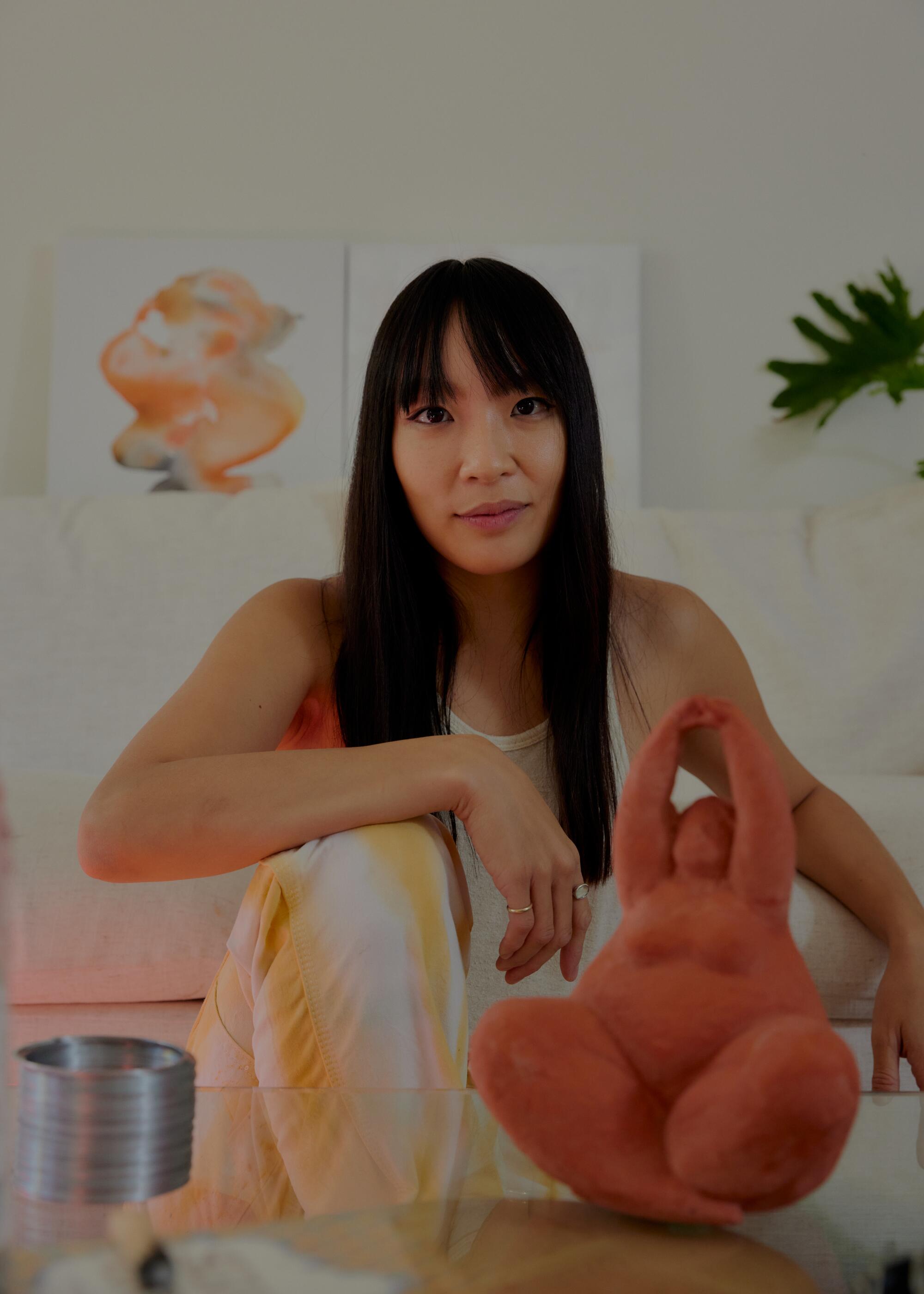
Ho — who now mostly collaborates with other restaurants, brands and private clients and does pop-ups for Sanditas — is one for a lavishly long table with a “Mad Hatter kind of spread,” where “one person at the end of table is having to reach over and then pass this and pass that.” I’m thinking, again, of the table at my uncle’s house, where there were sometimes up to 15 of us, at turns standing and sitting, choosing between multiple breakfast options (ripe and underripe mango, tapioca, French bread, cheese). The best kind of table gives you permission. It allows you to reach for a history, brings what is far near. A table eases you, opens your mind and compels you to come take a seat and play. “It’s the choreography that is just so fun and magical for me,” Ho says.
Food styling becomes its own choreography when Ho stacks five white bowls precariously and whimsically high, packing the crowning bowl with dumplings and pouring chili over them so that the reddish brown sauce glides down the porcelain, on to the tablecloth, messy and beautifully irreverent. Or when Cho separates her vegetables by hue — a Korean color theory that allows each item to have its “own moment,” like dancers on a stage, each item expressing what went into its existence.
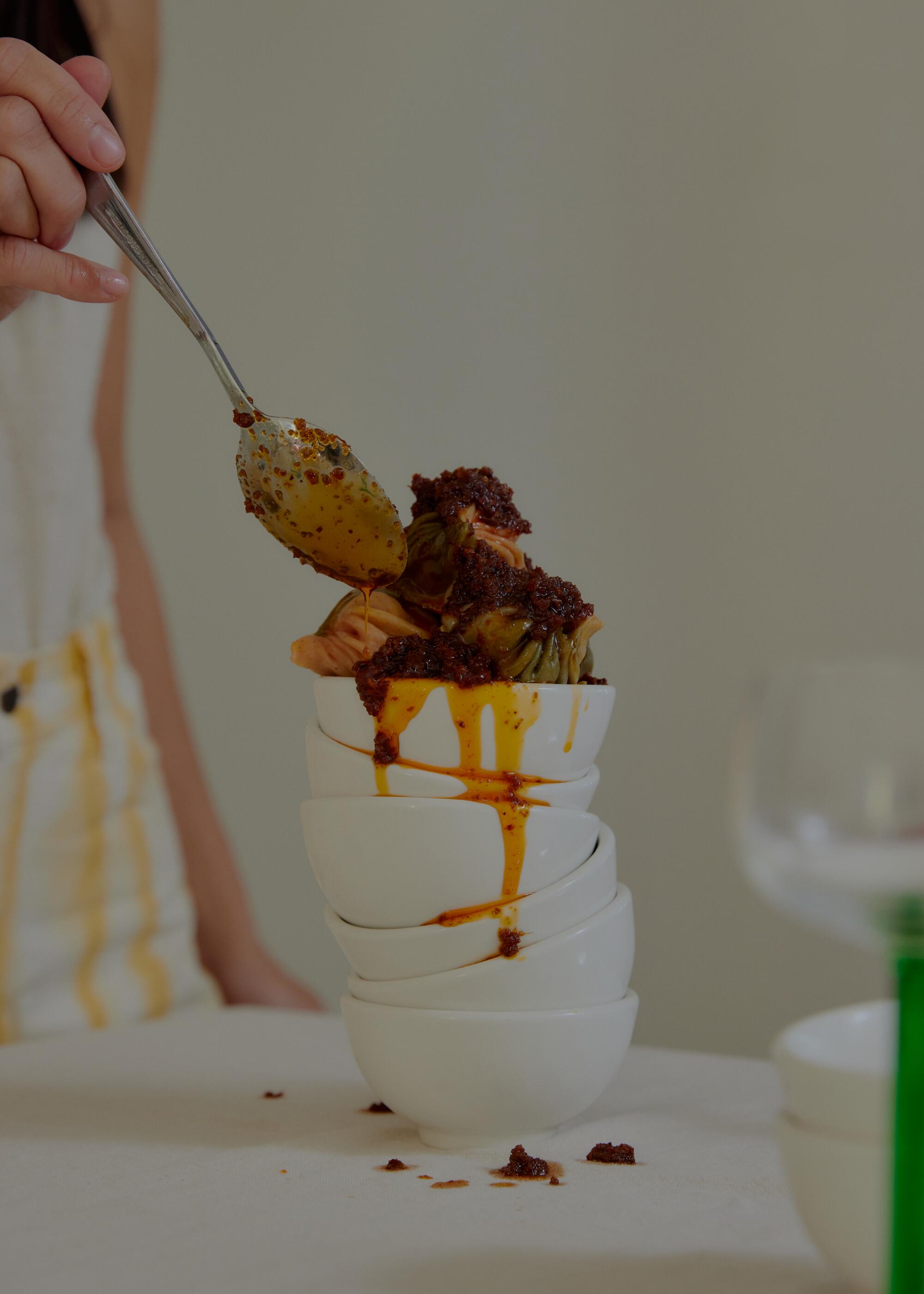
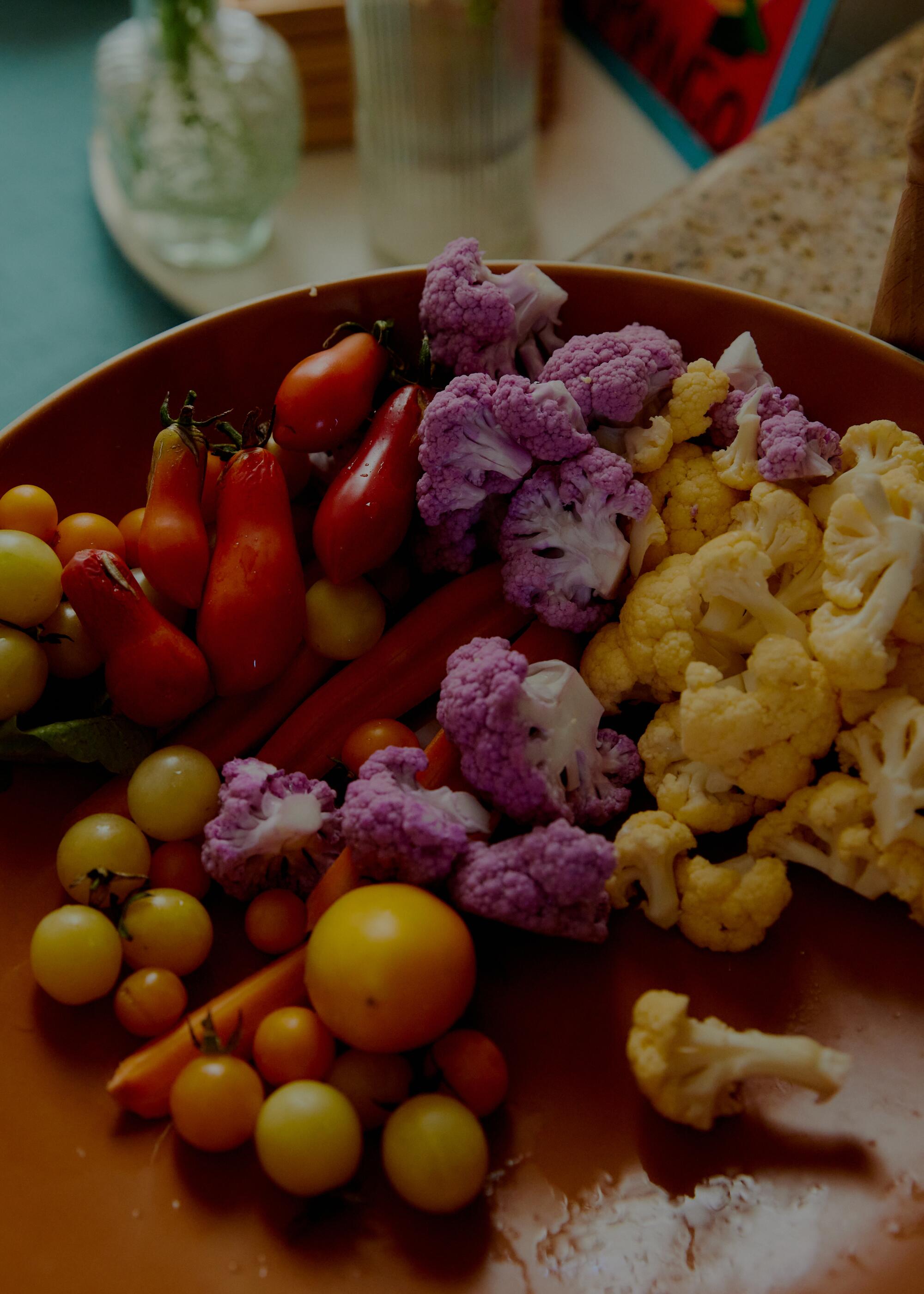
The labor that goes into selecting, cooking and arranging food can have a grounding effect. After working at Woodspoon from eleven in the morning to midnight, Pereira arrives home tired, smelling of garlic and with oil in her hair, and makes sculptures from leftover ingredients in the kitchen: the figure’s bodies are bound by flour and water, their dresses adorned with fennel seeds, their jewelry assembled from coffee and chocolate. She wants to give these ingredients an afterlife, distilling paints from beets, carrots, and crushed flowers to create floor-to-ceiling paintings of joyous ladies holding overflowing bouquets and emerald-green purses.
“Food talks with me,” Pereira says. “We have our intimacies, ingredients and I.” When she’s cooking, she feels “honored, important.” “It’s a faith,” she says. “I see miracles. To know that we’re able to create, that the earth gave us all this, that we’re able to create flavor, that we’re able to create a palate, that we’re able to leave behind memories…”
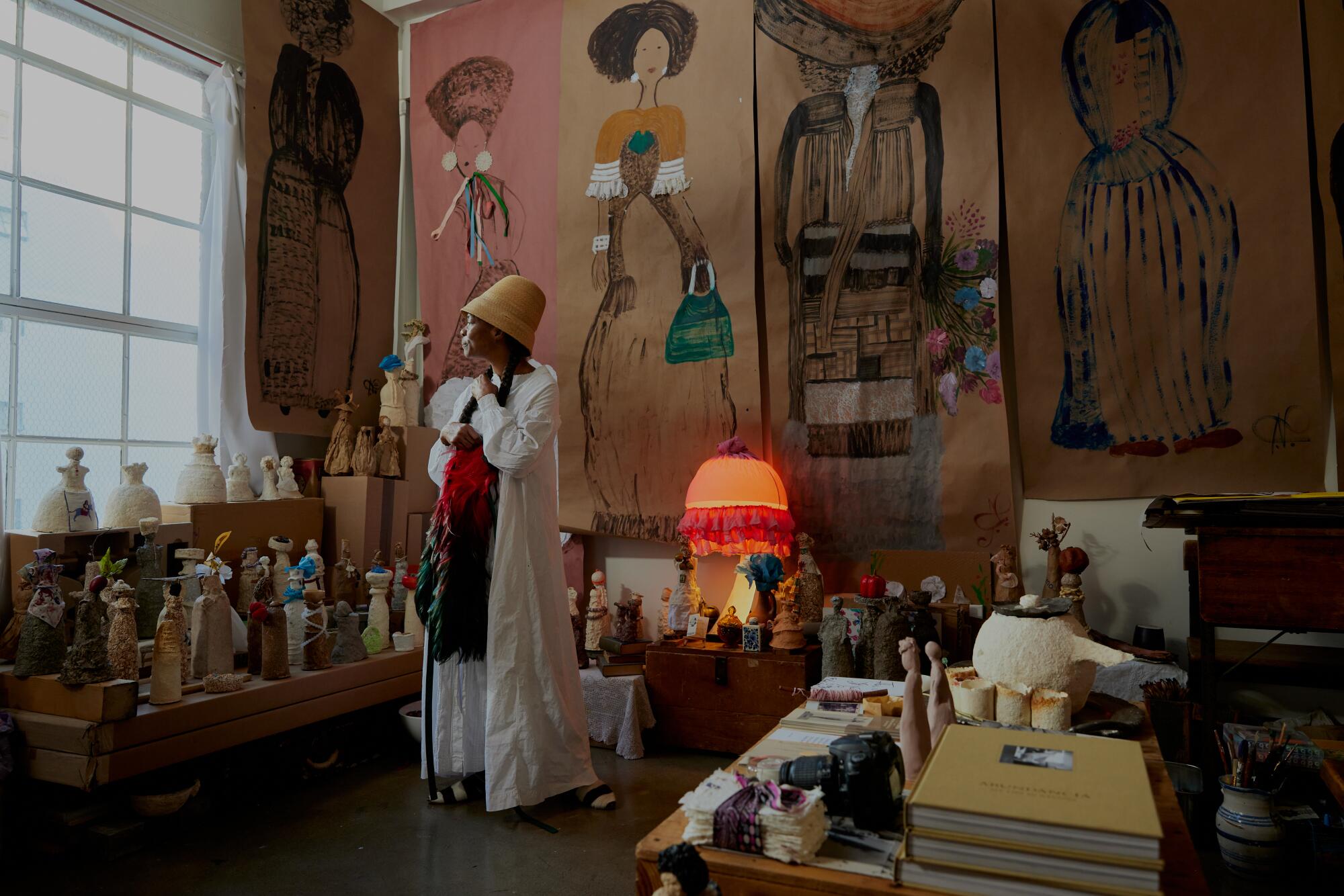
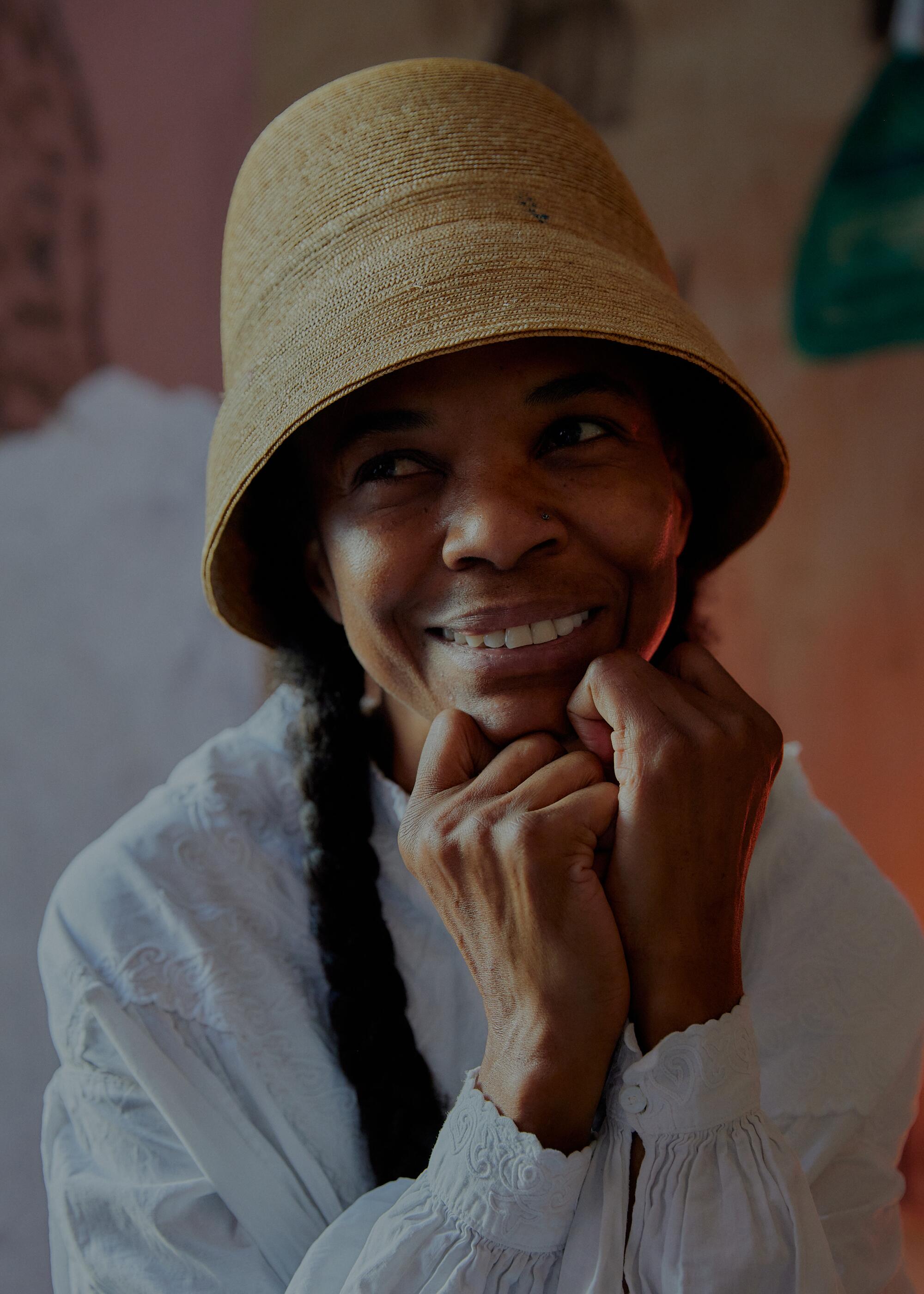
Pereira’s intimacy with food is about an intimacy with the earth, with the physical world. As she writes in her book “Abundancia,” life is made of this. “The way I do my hair, the way I dress, the way I cut kale, the way I use garlic and salt, the way I tuck rue behind my ear” — it’s all connected, she says.
Pereira doesn’t use recipes. She — like her mother, Francisca — has never owned a measuring spoon. Pereira prefers an unmediated relationship with her ingredients: “Food communicates in a pure way.” Pureness factors into her artworks as well. Pereira doesn’t sketch her artworks; she paints directly on the paper and builds her bowls and sculptures with her hands. When it comes to her work — whether a dish of chicken and manioc fries or a paper doll bound with string or one of her bowls made with blueberry seeds and thousand-year-old roses — you feel nourished by the care she puts into it.
For food stylists, touch also guides them in their process — it connects them to the work. Ho uses her collection of rocks as an example — “there’s something so tactile about these objects,” she says, comparing them to cutting open a delicata squash bursting with seeds and an electric orange. On her table spread, Ho scatters some of her rocks: the rosy one that looks like a slab of bacon, the gray one that softly glitters all around, the stone that turns a deep orange when coated in water.
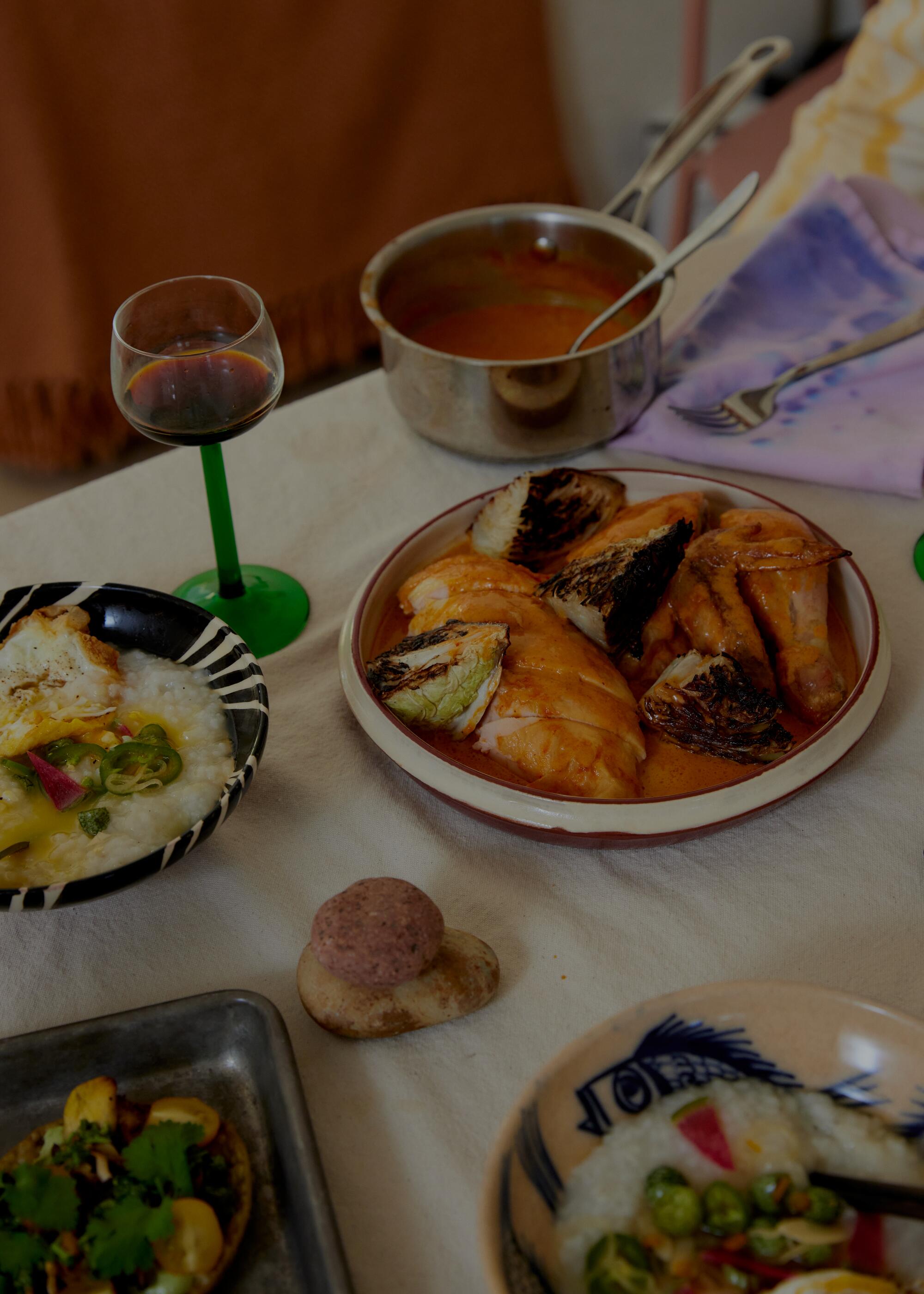
There’s a word in Korean, 손맛 (son-mat), that literally translates to “hand taste,” Cho says. “It’s the idea that the cook who has experience will bring that extra seasoning … It’s the kind of thing that gets translated out of a recipe — the way you feel the weight of sugar or the weight of flour, as opposed to measuring it.” You have to touch the food with your hands to “absorb it.”
Ideally, Cho knows all the hands that have touched her food, specifically the people who grew and tended to it. “A carrot is a carrot, but a carrot that I know Andrew grew or that I know that this season it was hard to grow because there was a lack of water, and that’s why it’s shaped like this — that’s what gives the thing something extra from me,” she says. “Because that creates the narrative that creates value.”
On my visits to each chef’s home, I watch them dig their hands into dough. Lick the sauce off their fingers. Slice into a fish. Gather bundles of purple cauliflower into their palms. They are unafraid of their ingredients; they feel them, lean into them.
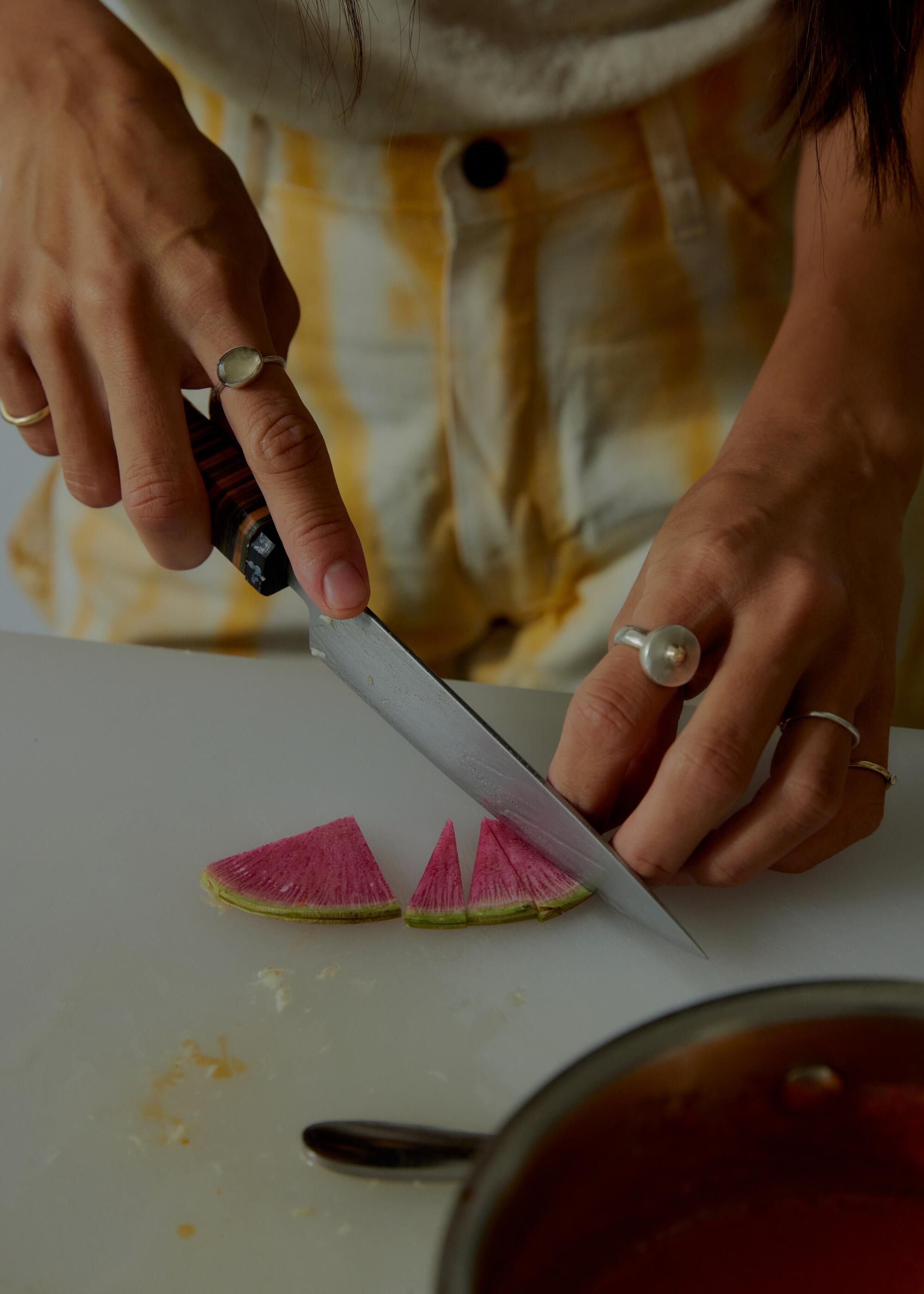
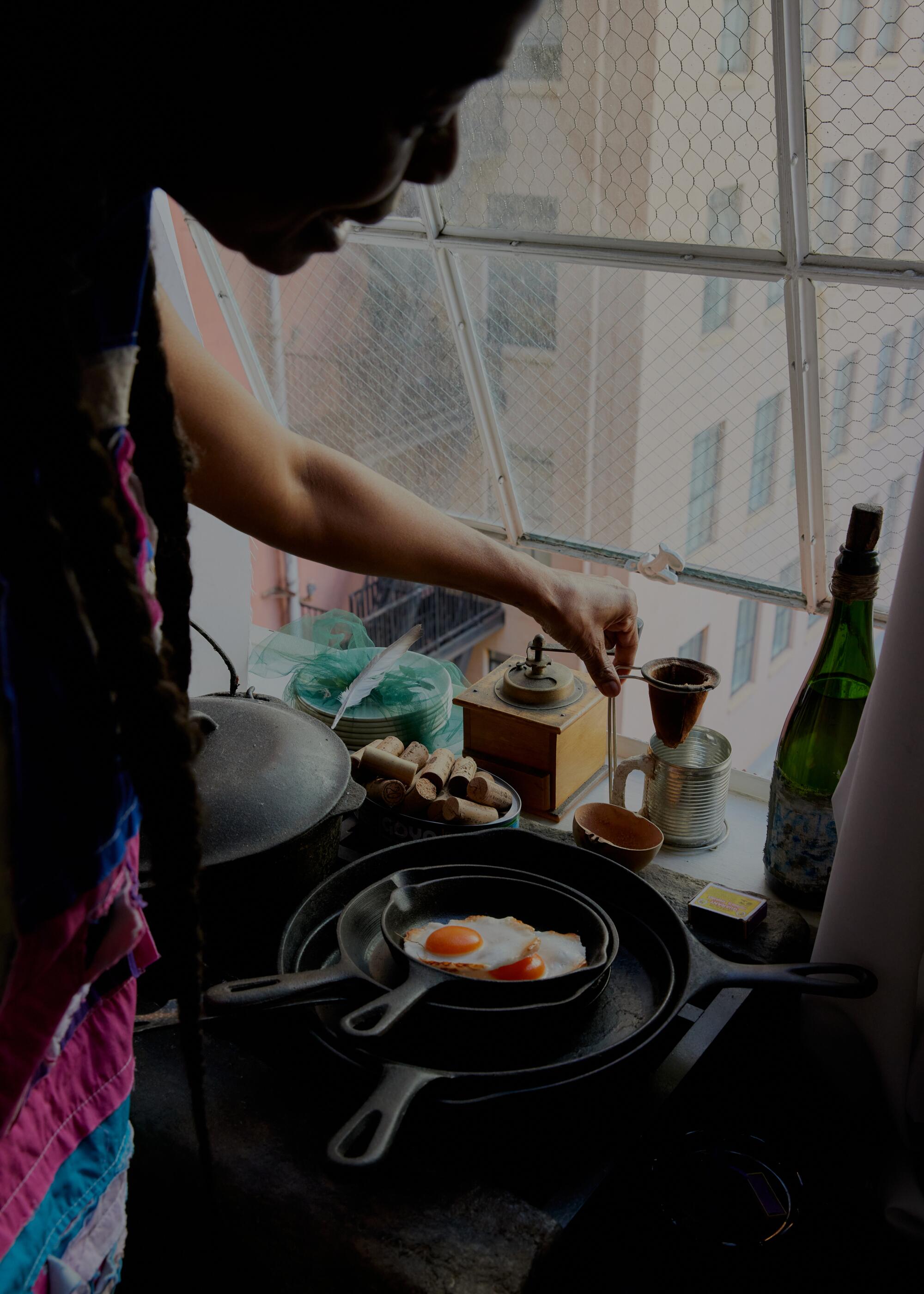
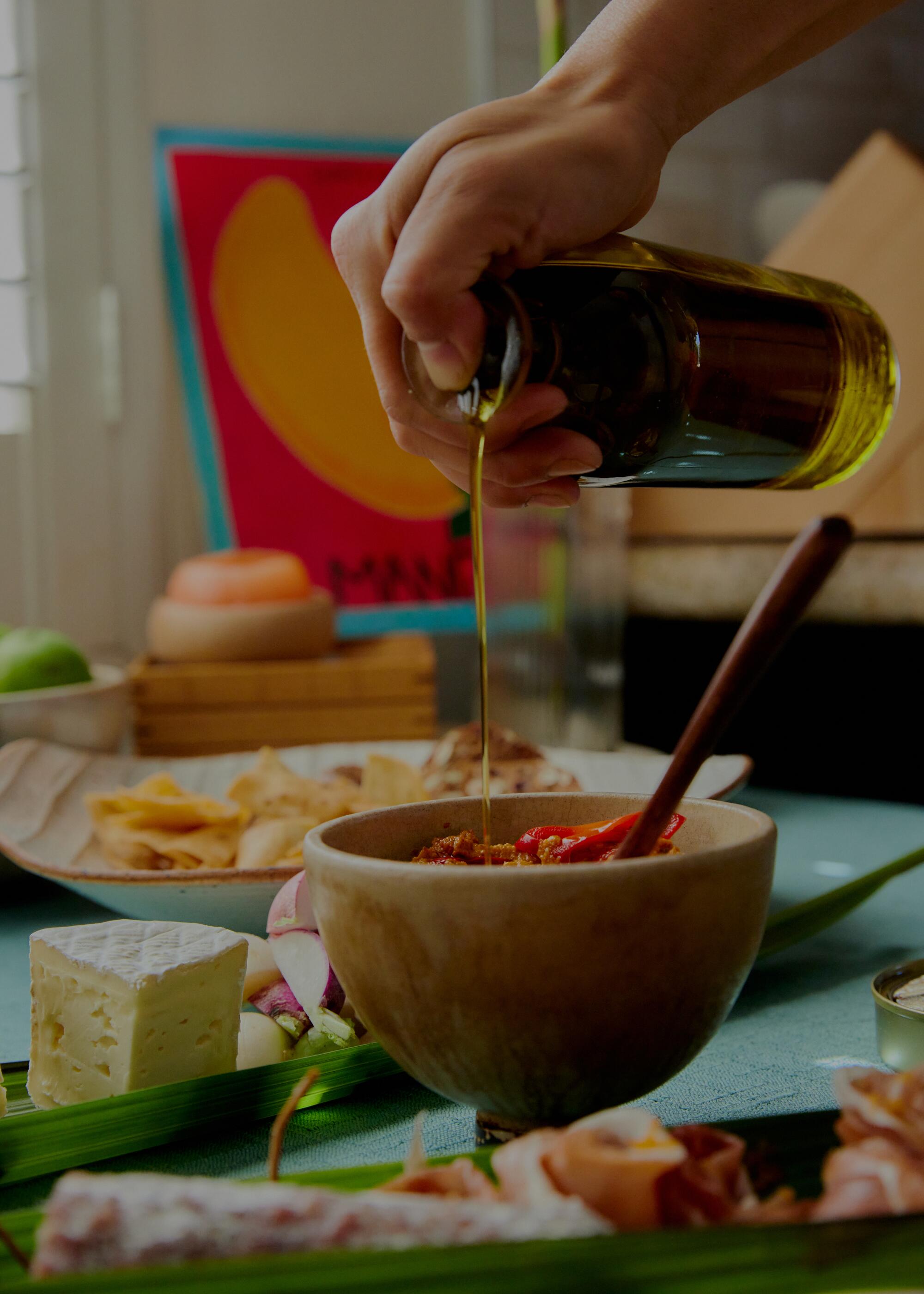
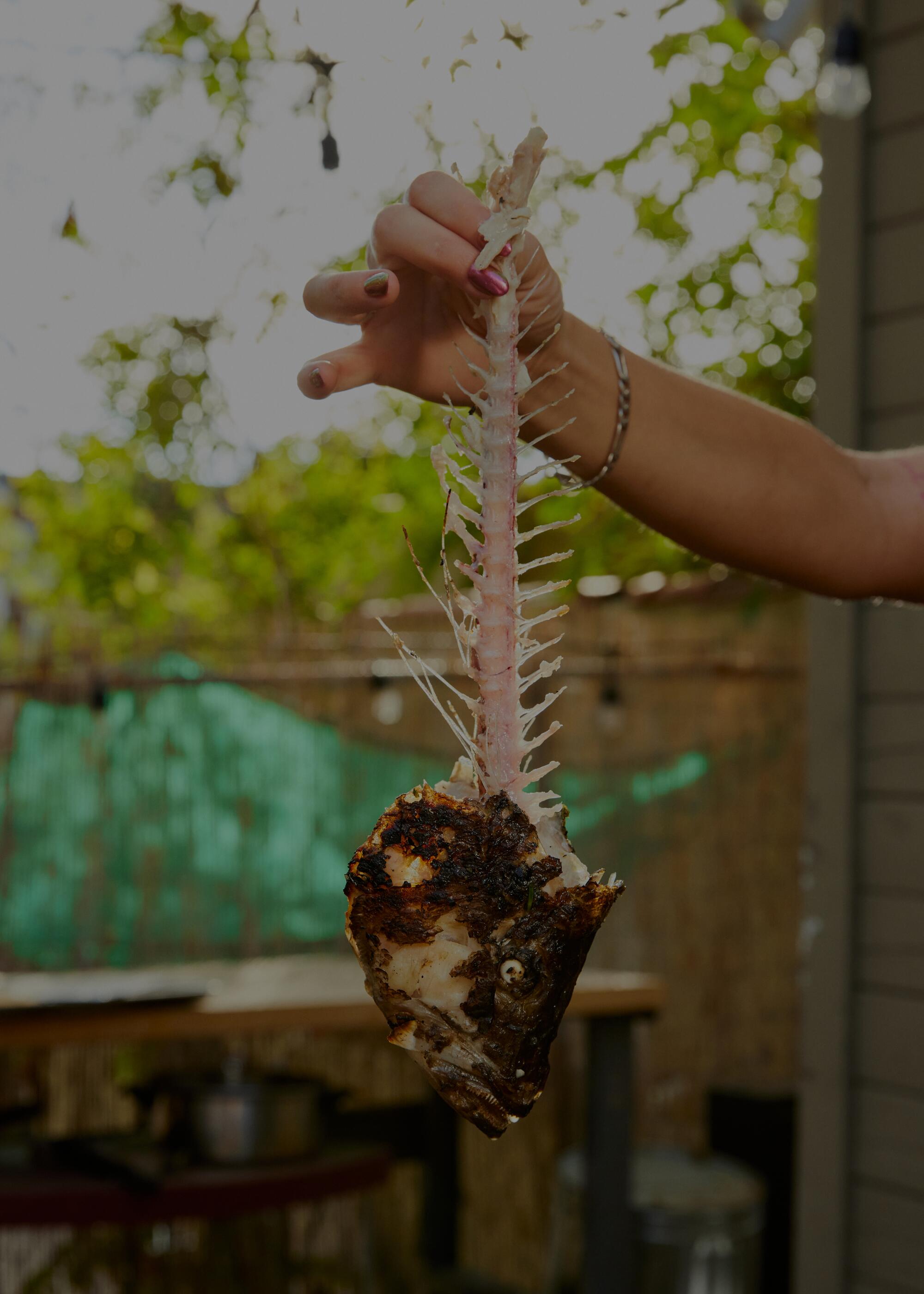
Cooking is effort. In Subero Pittol’s garage, I watch her dash between her smoking wood oven, fridge, and table (while wearing a bodysuit to contain the sweat). She pounds herbs and garlic oil, flips the seabass over flames, squeezes the tart tangerine in her hand. The table becomes a kind of support, withstanding all that chopping and pressing and weight. Subero Pittol says she gets “totally lost” in her head while cooking. “It’s the same sort of zone that I get into when painting something,” she says. “It’s just super hyper-focused creation mode.”
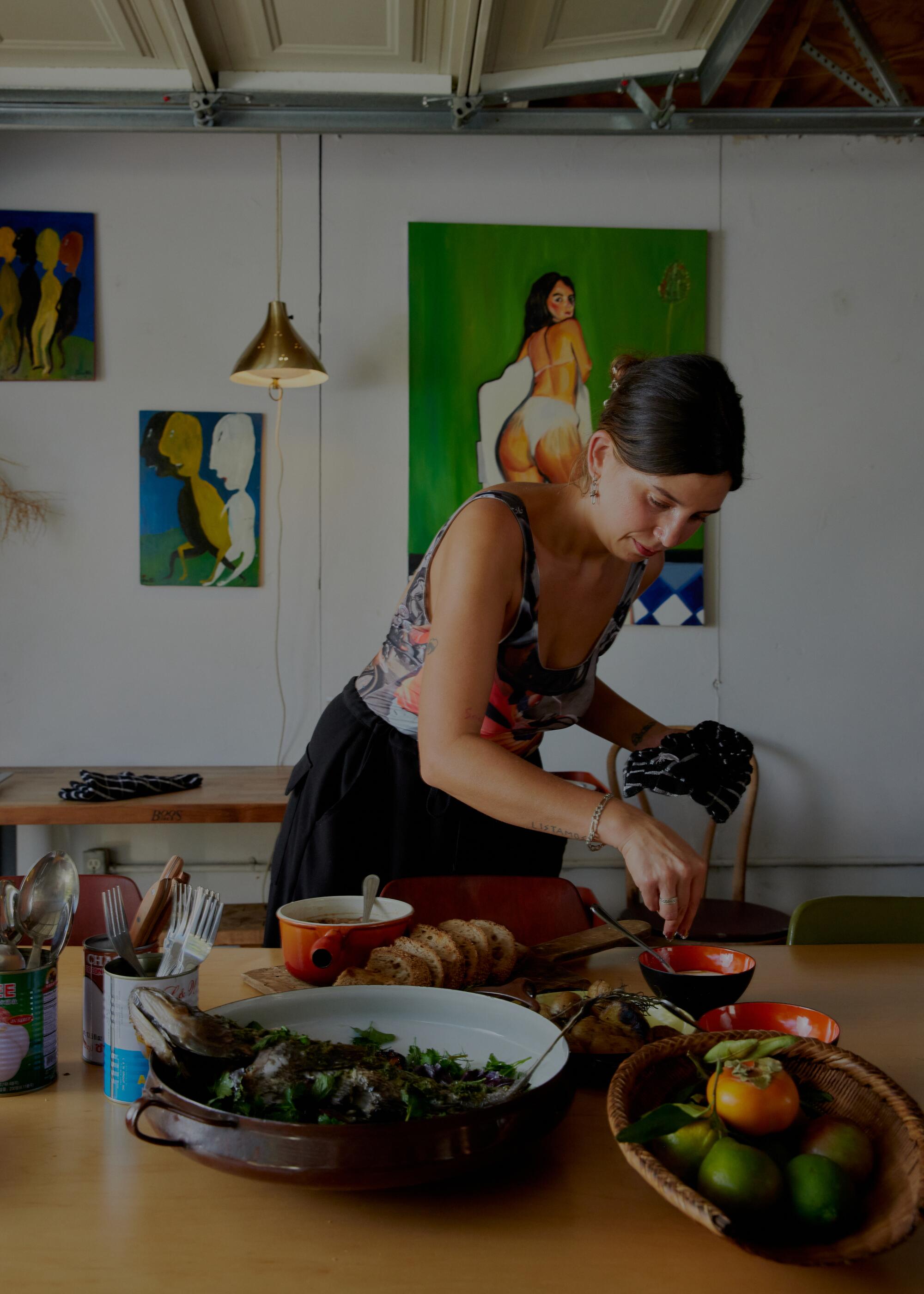
Subero Pittol has been painting since she was younger. When she first started cooking, she looked at her art history books for inspiration — Bacon, Miró, Picasso. “I would look at a color scheme and then kind of imagine what vegetables would make that color,” she says. “I still kind of do that.”
Ho also studied fine art before becoming a chef — she first envisions whatever she is going to cook in terms of color, in terms of a picture. Propped behind Ho’s couch are two of her paintings: washes of oranges, blues, and pinks over white backgrounds. She compares them to her mesmerizing, multicolored dumplings, which she makes by folding pigments extracted from spinach, squid ink, pink pitaya and turmeric into the dough. The result is as much a surprise as her abstract canvases.
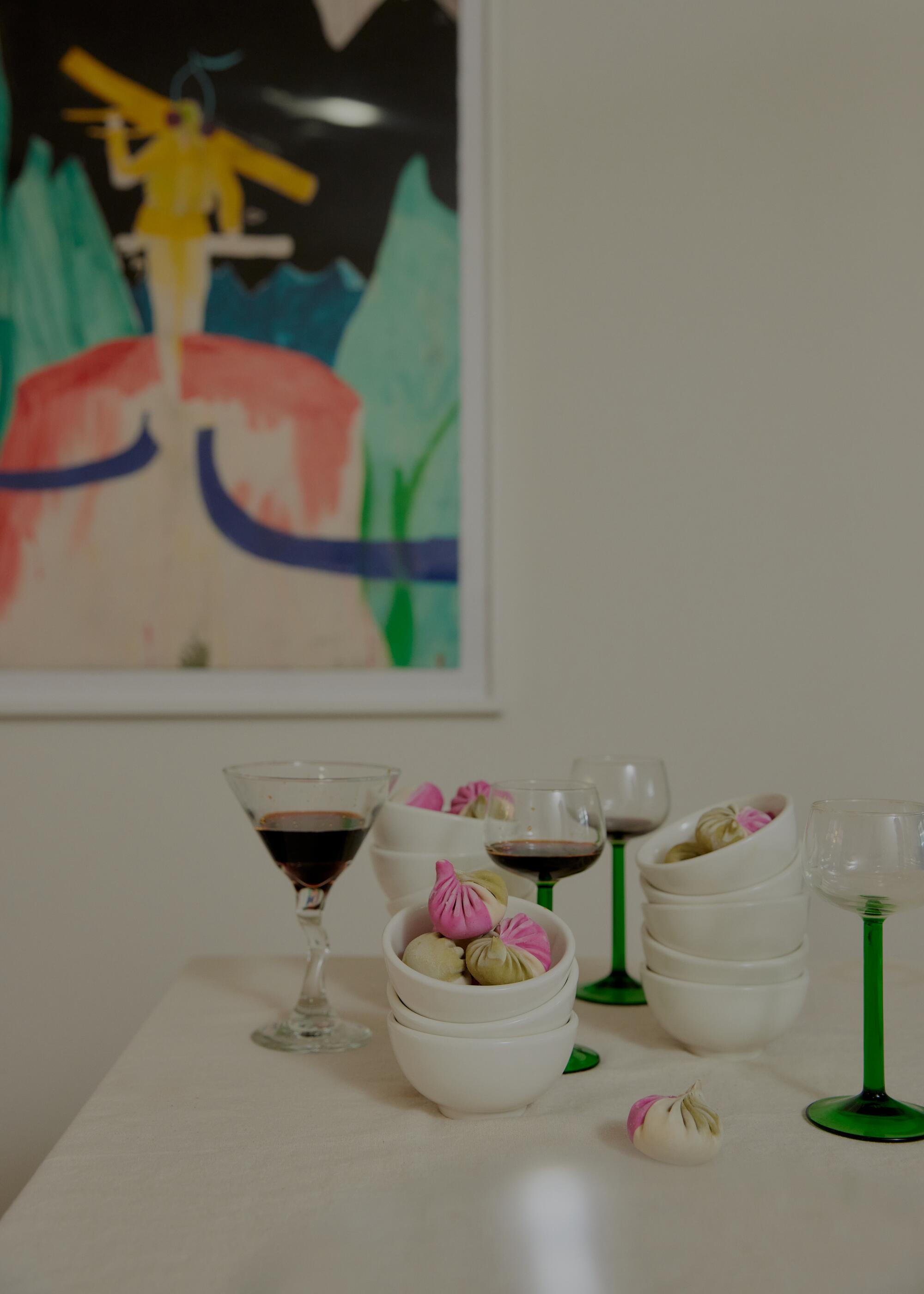
The effort that goes into a meal is like composing a painting in that you’re pouring yourself in the work. It’s this effort that makes the food or picture more vibrant, more present, more alive. A dish is like a painting which is like a poem, a rock, a part of a person, an offering to you.
The sensory experience of dining — a mouthful of pork dumpling, the remnants of smoke from a wood fire — connects you with the present. But food also serves as a constant reminder of the past — that you can access it at any point. A bite of Subero Pittol’s food takes her to the first time she ever tasted what she’s eating — including what the setting smelled like, who she was with and what they were wearing. Ho’s chicken is made with her mom’s Vietnamese coconut curry — cooked for a minimum of 8 hours — that she splashes on everything. The meals that these women make transport them through time, and almost always to their families. “Food, I think, for a lot of people is nostalgic,” Cho says.
Because my family regularly moved around, the food we ate also shifted, but we kept our staples — cooked kale, farofa (toasted yucca flour), and rice (always so much rice). Across the seven apartments and houses I grew up in, it’s the space of the dining table that I remember best, the space that somehow felt the same in each new environment, set with deep blue placemats and a jug of water with a green flower for a bottle stopper. Maybe that’s what it means to find a “solid table” — a table that holds your reality true, sustains it.
At Pereira’s house, she makes pão de queijo, or a Brazilian cheese bread, served hot and as individual, hand-sized balls (a snack I ate at the mall every week with my mom when we lived in Brazil). Her mom used to give her the leftover dough and Pereira would roll it into tiny balls and play. Its base, flour, is also the stuff of her art — “it’s the form that unites everything,” she says.
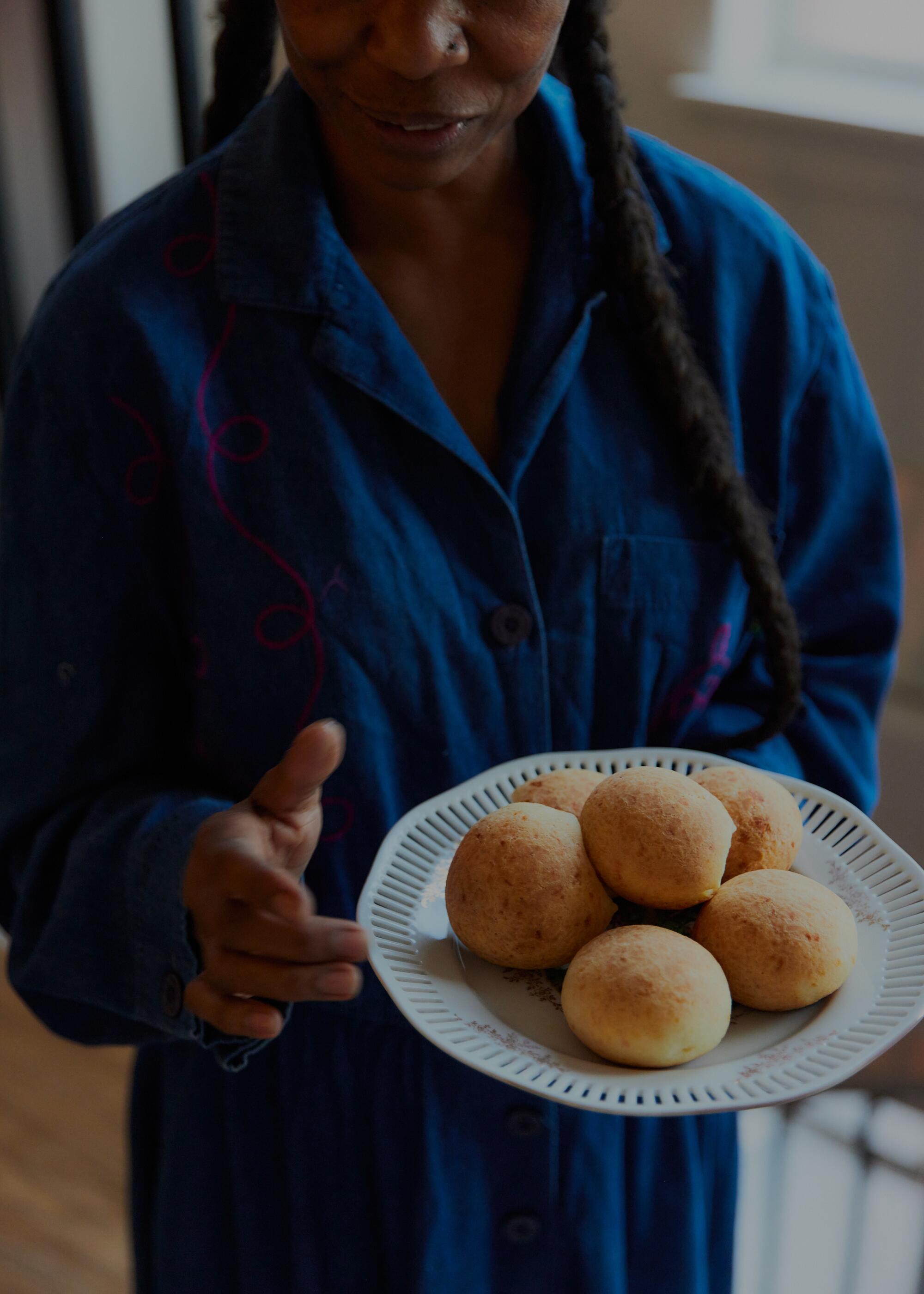
Pereira wouldn’t necessarily say that pão de queijo reminds her of home, because she didn’t translate what home meant to her until relatively recently. “I’ve always had this appetite, this longing to know, what is a home?” she says. But that changed when she started spending every day elbows-deep in flour, her hands caring for food and art, reveling in that palpable moment at the table of creating something new that she can touch, hold, and taste. “Finally, I have a lover, I have survival.”
More stories from Image


